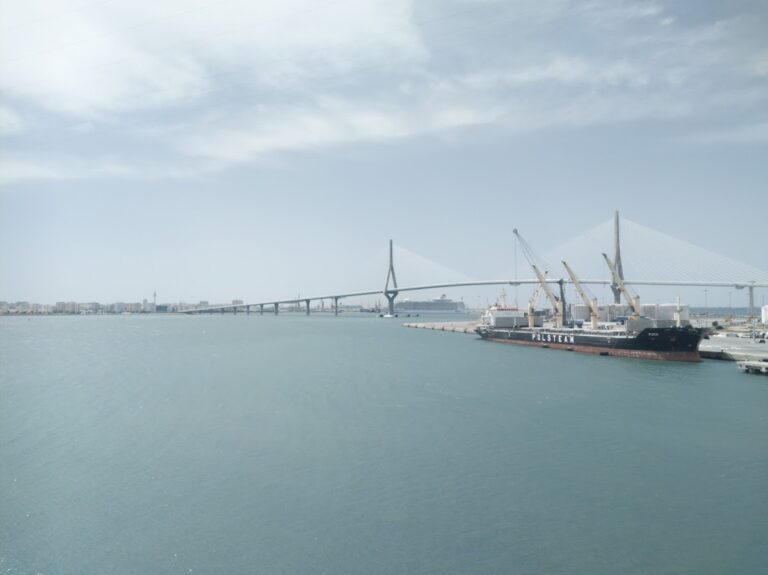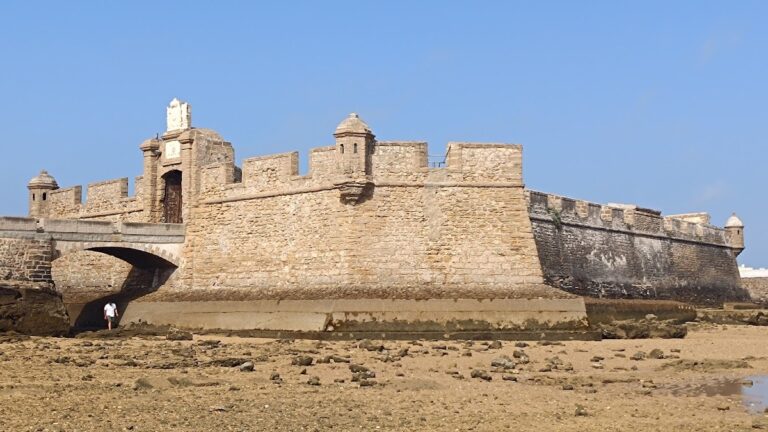Castillo de Sancti Petri: A Historic Coastal Fortress in San Fernando, Spain
Visitor Information
Google Rating: 4.2
Popularity: Medium
Google Maps: View on Google Maps
Country: Spain
Civilization: Unclassified
Remains: Military
History
The Castillo de Sancti Petri is situated on the small islet of Sancti Petri, located within the municipality of San Fernando, Spain. Its earliest known structure, a watchtower, was erected in 1610 and reflects the military architecture of the early modern Spanish kingdom.
The initial watchtower was part of a broader coastal surveillance system established under King Philip II during the 16th century, aiming to detect Berber pirate vessels and provide early warnings to the local population. This early construction laid the groundwork for a more extensive fortification that took shape in the 18th century.
During the 18th century, the castle was expanded, incorporating substantial walls and defensive enclosures designed to prevent hostile landings on the surrounding beaches, particularly from British, French, and Dutch forces, and to control naval access through the Caño de Sancti Petri channel leading towards the important port city of Cádiz. This period of construction reflects rising tensions and the need to secure the coast against European rivals.
The castle was linked to a network of nearby military installations, which included several batteries along Punta del Boquerón and a battery once positioned on the eastern shore of the Caño de Sancti Petri, forming a coordinated defense system in the area.
Historically, the islet lies close to the site of the ancient Temple of Hercules Gaditanus (also known as Melkart), an important sanctuary for the Phoenicians and Romans. While no conclusive evidence connects the current castle directly to the temple’s precise location, this association highlights the long-standing strategic and cultural significance of the site.
The castle saw active military engagement during the early 19th century. Between 1810 and 1812, it was bombarded by French forces amid the Peninsular War, a conflict involving Napoleonic France and Spain. Prior to this, in 1809, the fortification served as a prison for political detainees. Further military action occurred in 1823 during the French blockade, underscoring the site’s continued strategic role well into the 19th century.
In the 20th century, modernization efforts gave the tower a new function with the installation of an electric lighthouse in 1918, enhancing navigation in the surrounding waters. This lighthouse also incorporated a geodetic vertex, a precise survey point, housed beneath its protective glazed dome.
The islet experienced a territorial dispute that was formally settled in 2005, confirming its administration under the municipality of San Fernando. Recognizing its heritage value, the castle has been designated as a Bien de Interés Cultural monument, ensuring its protection under Spanish cultural heritage legislation and acknowledgment by Andalusian authorities.
A major restoration project was completed in 2010, funded by the Spanish Ministry of Environment. While the intervention addressed natural deterioration, it faced criticism for altering some original construction methods and damaging historical inscriptions.
Remains
The Castillo de Sancti Petri occupies most of the Sancti Petri islet with an irregular layout centered around a prominent square tower known as the atalaya. This tower, built in 1610, forms the oldest surviving part of the fortress. It features a sturdy, truncated trapezoidal base with thick masonry walls, constructed from locally sourced ostionera stone. Despite lacking formal foundations, these walls are several meters thick and were built to endure artillery strikes. Remnants of machicolations remain at the tower’s upper corners—these are projecting stone structures once used to mount early artillery such as bombards.
To adapt to its later role as a lighthouse, the tower’s summit was modified to support this function, with a glazed dome installed to shield the optical equipment. This addition contributes to the tower’s unique appearance, combining its military past with navigational use.
Surrounding the tower, the 18th-century walls extend primarily along a north-south axis with mostly straight sections interrupted by a semicircular battery on the eastern side. The heights and thicknesses of the walls vary, tailored to their defensive tasks. Their design focused on firing upon approaching enemy ships rather than serving as strong barriers against any direct landings on the islet itself.
Within the fortification, military facilities including the main tower and associated dependencies are concentrated in the northern sector, while additional batteries and support structures occupy the southern part. The predominant building material continues to be ostionera stone, a local marine limestone quarried from nearby reefs and cliffs, giving the fortress cohesion with its natural surroundings.
At the base of the tower lies a cistern, an essential feature for water storage. The cistern bears an 18th-century inscription on the rim of one of its wells, providing evidence for the period of the castle’s expansion and construction activities during that century.
The 2010 restoration included notable changes such as building a lengthy concrete pier measuring 55 by 6 meters and reconstructing parts of the southern sector. These interventions, while aimed at preservation, altered the original spatial arrangement and impacted portions of the original stonework and masonry walls.
Before restoration, the castle had suffered significant deterioration due to natural erosion and years of neglect. Today, while the structure is preserved, it reflects layers of modification spanning centuries, from its 17th-century tower origins through the 18th-century fortifications to 20th-century adaptations. Although no formal archaeological excavations have been conducted on the site, the castle’s tangible elements offer a clear record of its military evolution and enduring role on the Andalusian coast.










